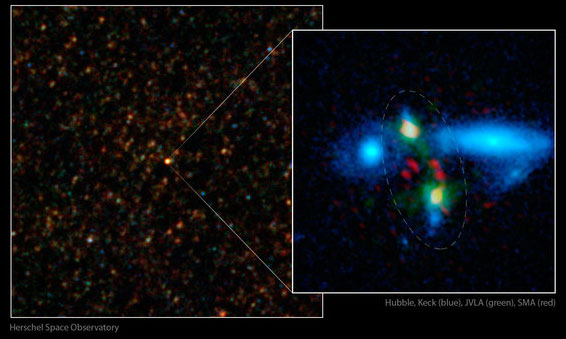 A rare encounter between two gas-rich galaxies spotted by ESA's Herschel space observatory indicates a solution to an outstanding problem: how did massive, passive galaxies form in the early Universe?
A rare encounter between two gas-rich galaxies spotted by ESA's Herschel space observatory indicates a solution to an outstanding problem: how did massive, passive galaxies form in the early Universe?
May 22nd, 2013
Read more
NASA is looking for far-out ideas. NASA's Innovative Advanced Concepts (NIAC) Program is seeking Phase II proposals for continuation of promising studies selected during the first phase of the visionary program.
May 22nd, 2013
Read more
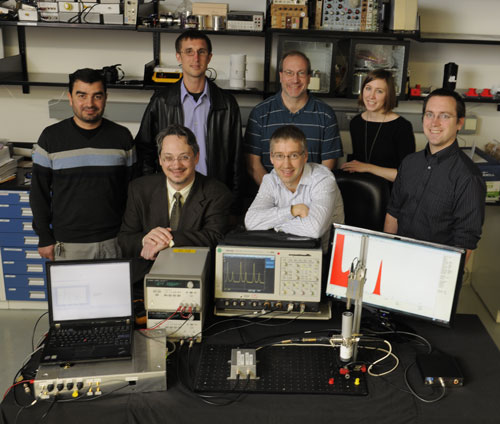 Pulsars have a number of unusual qualities. Like zombies, they shine even though they're technically dead, and they rotate rapidly, emitting powerful and regular beams of radiation that are seen as flashes of light, blinking on and off at intervals from seconds to milliseconds. A NASA team has built a first-of-a-kind testbed that simulates these distinctive pulsations.
Pulsars have a number of unusual qualities. Like zombies, they shine even though they're technically dead, and they rotate rapidly, emitting powerful and regular beams of radiation that are seen as flashes of light, blinking on and off at intervals from seconds to milliseconds. A NASA team has built a first-of-a-kind testbed that simulates these distinctive pulsations.
May 21st, 2013
Read more
 Earth watcher Proba-V is in good health following its launch last week. The Vegetation imager has been switched on and the first image has been captured over western France.
Earth watcher Proba-V is in good health following its launch last week. The Vegetation imager has been switched on and the first image has been captured over western France.
May 18th, 2013
Read more
NASA's first mission to sample an asteroid is moving ahead into development and testing in preparation for its launch in 2016.
May 18th, 2013
Read more
The University of Luxembourg in collaboration with the Max Planck Institute Luxembourg for International, European and Regulatory Procedural Law and the SES Chair in Satellite Communication and Media Law present the 2nd Luxembourg Workshop on Satellite Communication entitled Satellite Communication and Dispute Resolution.
May 17th, 2013
Read more
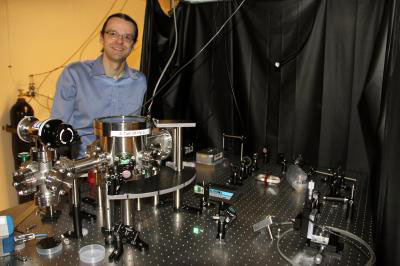 A new window into the nature of the universe may be possible with a device proposed by scientists at the University of Nevada, Reno and Stanford University that would detect elusive gravity waves from the other end of the cosmos.
A new window into the nature of the universe may be possible with a device proposed by scientists at the University of Nevada, Reno and Stanford University that would detect elusive gravity waves from the other end of the cosmos.
May 16th, 2013
Read more
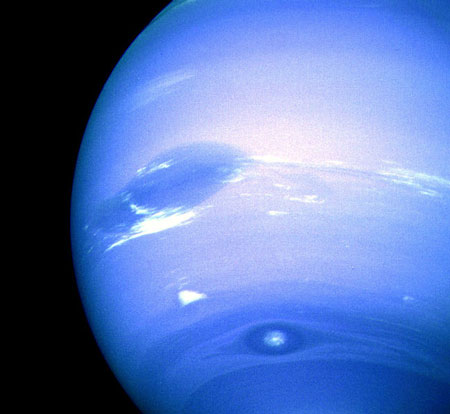 Weizmann Institute researchers and their colleagues set an upper limit for the thickness of jet streams on Uranus and Neptune.
Weizmann Institute researchers and their colleagues set an upper limit for the thickness of jet streams on Uranus and Neptune.
May 16th, 2013
Read more
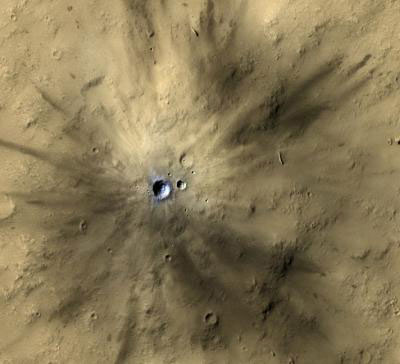 Taking before and after pictures of Martian terrain, researchers of the HiRISE imaging experiment have identified almost 250 fresh impact craters on the Red Planet, providing a more accurate yardstick of surface processes on Mars.
Taking before and after pictures of Martian terrain, researchers of the HiRISE imaging experiment have identified almost 250 fresh impact craters on the Red Planet, providing a more accurate yardstick of surface processes on Mars.
May 15th, 2013
Read more
Scientists have created the first global topographic map of Saturn's moon Titan, giving researchers a valuable tool for learning more about one of the most Earthlike and interesting worlds in the solar system.
May 15th, 2013
Read more
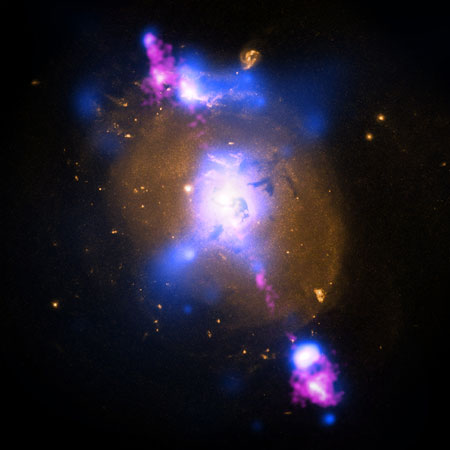 The intense gravity of a supermassive black hole can be tapped to produce immense power in the form of jets moving at millions of miles per hour.
The intense gravity of a supermassive black hole can be tapped to produce immense power in the form of jets moving at millions of miles per hour.
May 15th, 2013
Read more
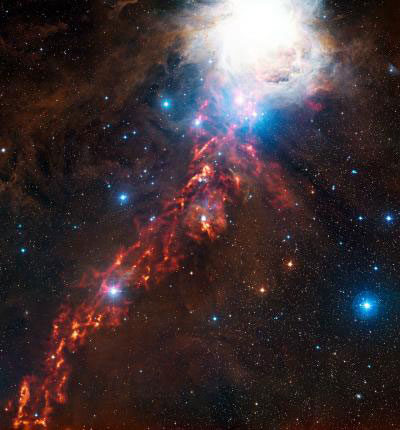 A dramatic new image of cosmic clouds in the constellation of Orion reveals what seems to be a fiery ribbon in the sky.
A dramatic new image of cosmic clouds in the constellation of Orion reveals what seems to be a fiery ribbon in the sky.
May 15th, 2013
Read more
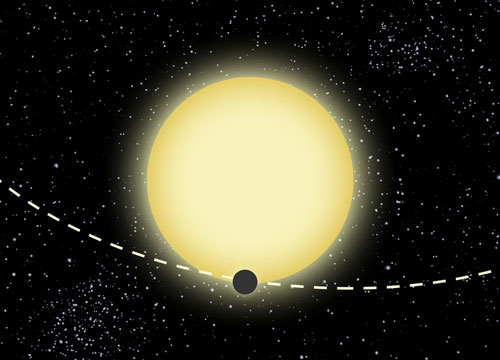 Detecting alien worlds presents a significant challenge since they are small, faint, and close to their stars. The two most prolific techniques for finding exoplanets are radial velocity (looking for wobbling stars) and transits (looking for dimming stars). A team at Tel Aviv University and the Harvard-Smithsonian Center for Astrophysics has just discovered an exoplanet using a new method that relies on Einstein's special theory of relativity.
Detecting alien worlds presents a significant challenge since they are small, faint, and close to their stars. The two most prolific techniques for finding exoplanets are radial velocity (looking for wobbling stars) and transits (looking for dimming stars). A team at Tel Aviv University and the Harvard-Smithsonian Center for Astrophysics has just discovered an exoplanet using a new method that relies on Einstein's special theory of relativity.
May 13th, 2013
Read more
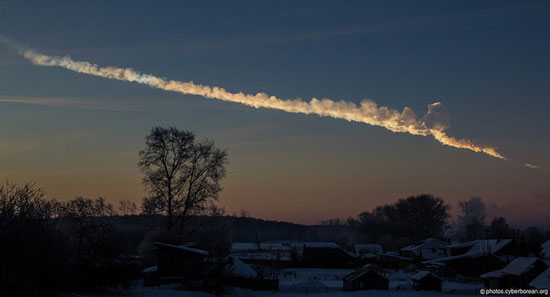 This week, Deimos Space, an industrial partner working for ESA on SSA, has invited top researchers from universities, research institutes, national space agencies and industry in Europe and the USA to discuss the state of the art in near-Earth objects impact effects and threat mitigation.
This week, Deimos Space, an industrial partner working for ESA on SSA, has invited top researchers from universities, research institutes, national space agencies and industry in Europe and the USA to discuss the state of the art in near-Earth objects impact effects and threat mitigation.
May 13th, 2013
Read more
Water inside the Moon's mantle came from primitive meteorites, new research finds, the same source thought to have supplied most of the water on Earth. The findings raise new questions about the process that formed the Moon.
May 9th, 2013
Read more
NASA's Hubble Space Telescope has found the building blocks for Earth-sized planets in an unlikely place-- the atmospheres of a pair of burned-out stars called white dwarfs.
May 9th, 2013
Read more
An international team of physicists has found the first direct evidence of pear shaped nuclei in exotic atoms.
May 8th, 2013
Read more
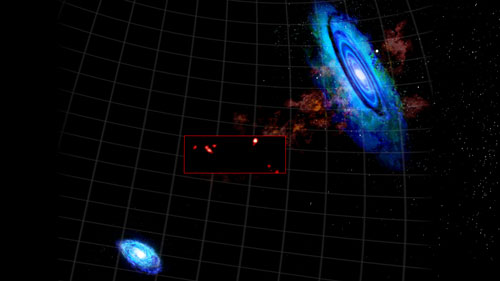 In a dark, starless patch of intergalactic space, astronomers have discovered a never-before-seen cluster of hydrogen clouds strewn between two nearby galaxies, Andromeda (M31) and Triangulum (M33). The researchers speculate that these rarefied blobs of gas condensed out of a vast and as-yet undetected reservoir of hot, ionized gas, which could have accompanied an otherwise invisible band of dark matter.
In a dark, starless patch of intergalactic space, astronomers have discovered a never-before-seen cluster of hydrogen clouds strewn between two nearby galaxies, Andromeda (M31) and Triangulum (M33). The researchers speculate that these rarefied blobs of gas condensed out of a vast and as-yet undetected reservoir of hot, ionized gas, which could have accompanied an otherwise invisible band of dark matter.
May 8th, 2013
Read more
 A rare encounter between two gas-rich galaxies spotted by ESA's Herschel space observatory indicates a solution to an outstanding problem: how did massive, passive galaxies form in the early Universe?
A rare encounter between two gas-rich galaxies spotted by ESA's Herschel space observatory indicates a solution to an outstanding problem: how did massive, passive galaxies form in the early Universe? 
 Subscribe to our Space Exploration News feed
Subscribe to our Space Exploration News feed








